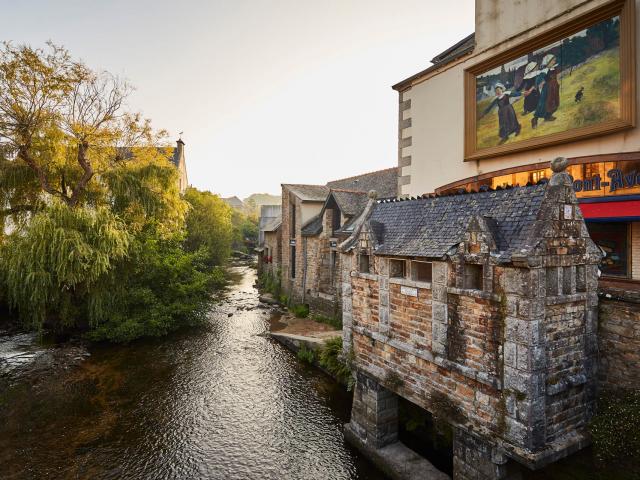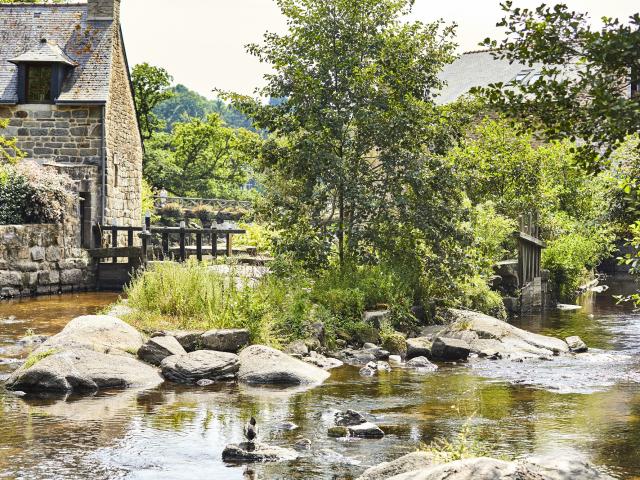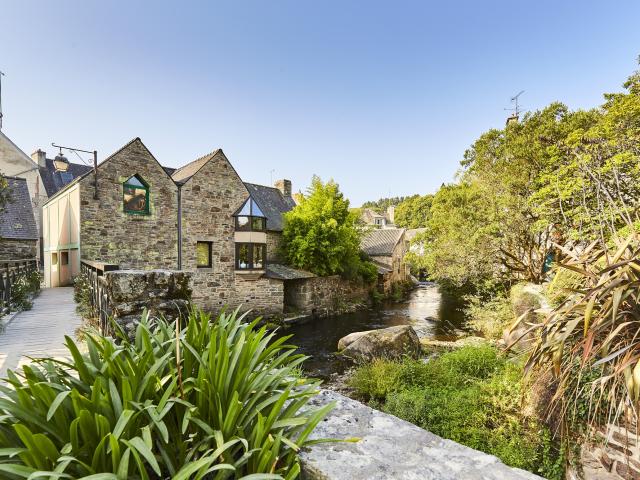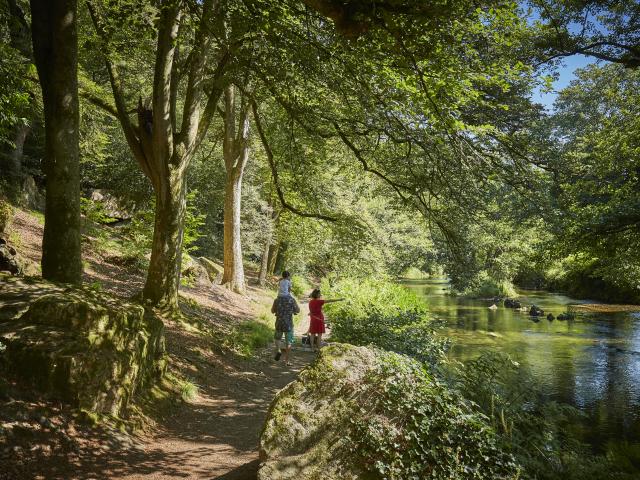
©LAMOUREUX Alexandre

©LAMOUREUX Alexandre

©Pont-Aven|LAMOUREUX Alexandre

©LAMOUREUX Alexandre

©LAMOUREUX Alexandre
This little town, nestled in the lush Aven estuary, owes its fame to the school of painters who had Gauguin as their master. As you stroll along the ria, going over the footbridges, it’s easy to imagine why the artists were fascinated by the poetry of the landscapes and the luminosity of the little port.





Click. Inspire. Go…
Receive the Brittany newsletter!
The Aven crosses the town, changing from a capricious river to a peaceful tidal estuary dotted with pleasure boats. The water bounces between large, rounded boulders, turning one or two wooden wheels, preserved evidence of the former 14 mills. In the 19th century, the artistic colony which set up on this bucolic site painted the village in new colours. Today, there are many art galleries perpetuating the bohemian spirit of times past.
Seeking to save money and in quest of “exotic” subjects, the painters started coming to Pont-Aven in 1860. Gauguin, more daring than others (Bernard, Sérusier, Maufra, etc.), became the head of the founding group of the Pont-Aven School in 1886. The painters resided in Pension Gloanec and would take their easels to Bois d’Amour. There is a lovely trail where you can see the places that inspired them. In the town centre, the museum, surrounded with galleries, traces this creative period.

Pont-Aven is ideal for moving from framed landscapes to natural landscapes. Promenade Xavier-Grall takes you from one riverbank to the other via secret footbridges, along the wash houses, forebays and gates that irrigate the vestiges of the watermills. The stone walls and bridges are decorated with colourful flowers. In the water, a large rock, nicknamed “Gargantua’s shoe” is a reminder that legendary heroes inhabit sumptuous sites.
A tasty break
To take a break between two galleries or to wait for the crowds of tourists to pass at certain times in summer, bite into a few Pont-Aven biscuits. The most well-known are Traou-Mad.
Read more
Above Bois d’Amour, Trémalo chapel hides behind curtains of oak and beech trees. Its odd asymmetrical roof leans almost to the ground on the northern side. Gauguin made the polychrome crucifix in the nave famous in his painting “The Yellow Christ”.
Further upstream, an adorable 15th-century tide mill sits next to Hénant castle. When you arrive at the sea, the gorgeous Port-Manech beach is surrounded with white cabins.
